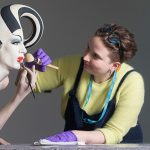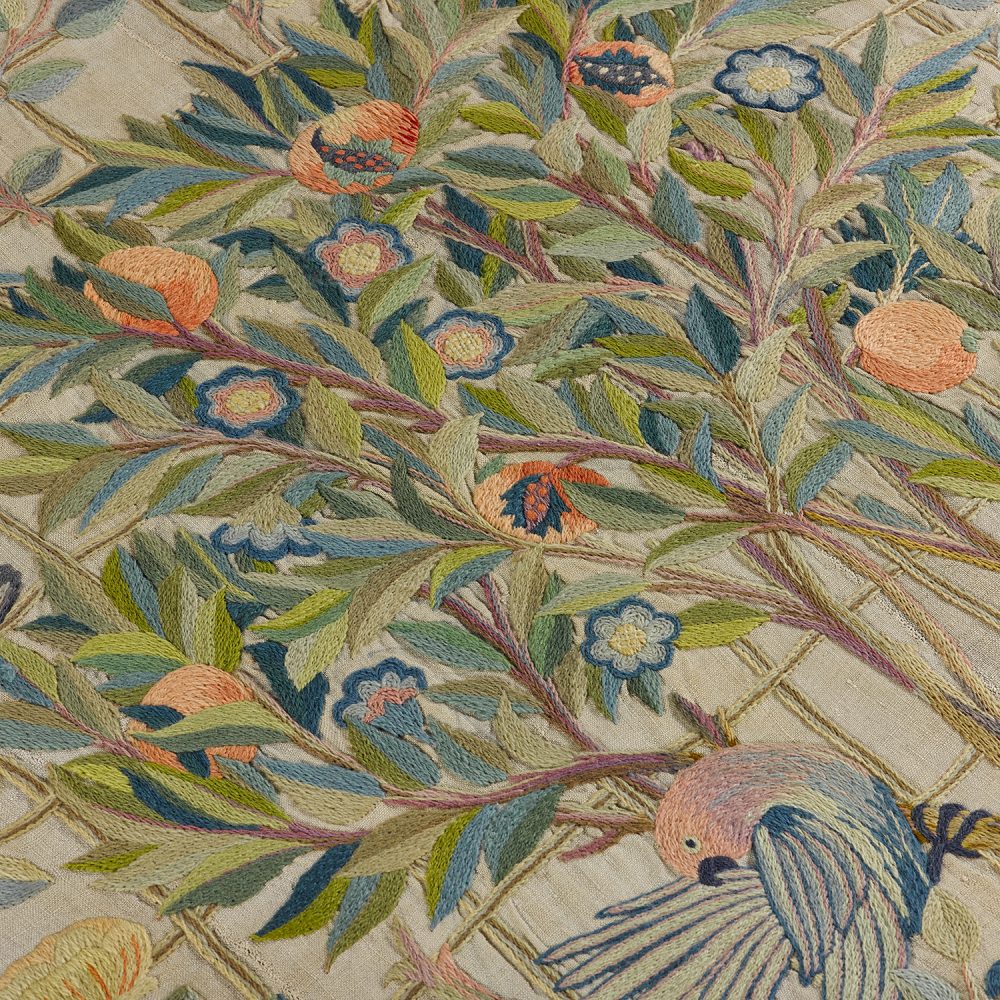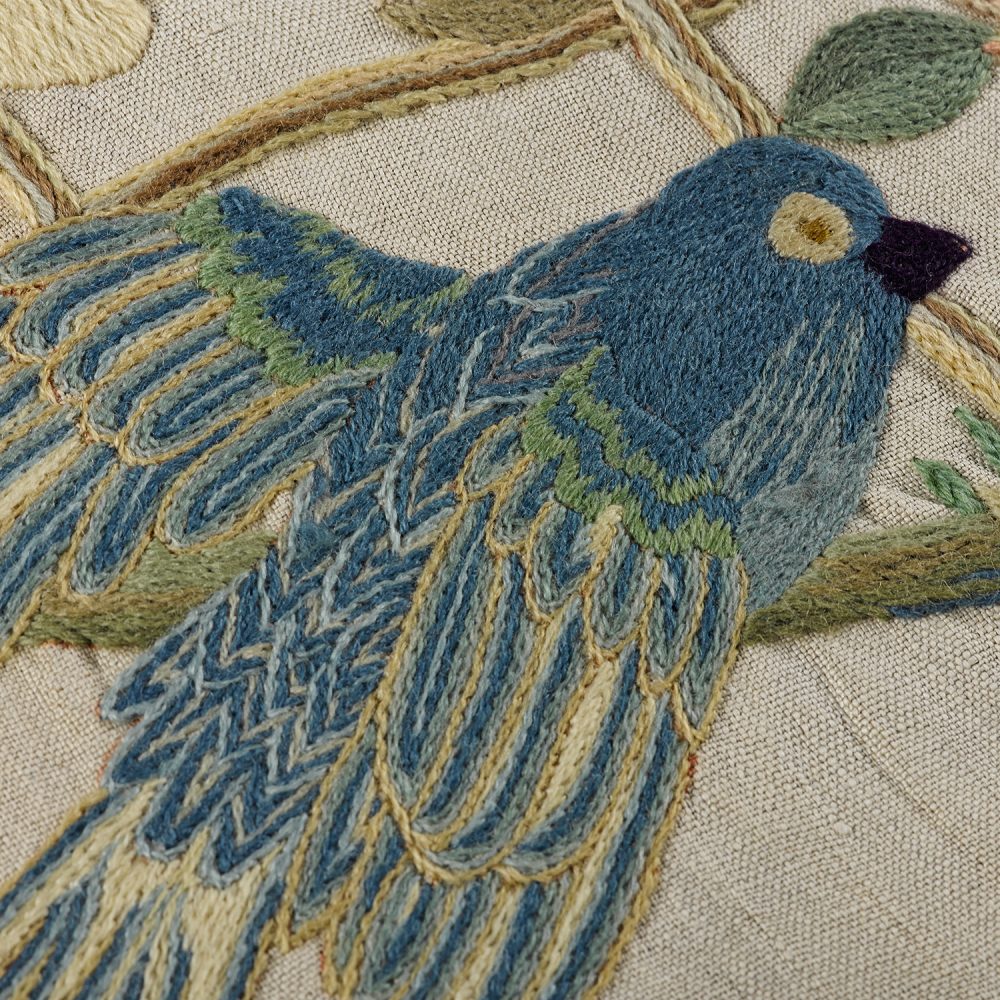In our Orientations series, members of the LGBTQIA+ community explore an object that resonates with their identity. Laurie Bassam, Assistant Curator at V&A Dundee, chose an embroidered hanging by May Morris. Laurie reflects on how hidden identities, once revealed, can offer a new context and transform our understanding of an otherwise familiar history.
What do you think of when you hear “Arts and Crafts movement” or “Morris & Co”? In most people’s minds, they’re synonymous with beautiful floral wallpapers, handsome hand-crafted designs and (in a modern context) nice prints on items in museum gift shops.
As a child of a middle-class family, I spent some of my summer holidays in National Trust properties, learning about Arts and Crafts. I thought I knew a lot about this quintessentially British decorative art movement. I even read News From Nowhere as an impassioned teen interested in radical politics (in the book, William Morris essentially advocates turning the Houses of Parliament into a dung heap!). However, what I think might have become obscured from the history we tell of this movement is the radical personal politics at the centre of it. Specifically, the life of May Morris.

In the last few years, as queer histories have become more openly discussed as part of public life, and as curators and historians have been more keenly telling these stories, May has come to forefront. But her queerness, or even the suggestion of it, took me by surprise.
Growing up as part of the LGBTQIA+ community, it’s hard, and often frustrating, that you don’t find yourself in the things around you. Even in a liberal city like Brighton, where I was at school in the dying days of Section 28, it wasn’t always as easy as people think. Art, design, craft and theatre were always a refuge for me, where all the odd balls and misfits hung out, both historically and in the present.
Subconsciously or not, you pick idols like Frida Kahlo or Claude Cahun because they represent the outsider, the unusual, the arty, the queer. May Morris would have been a welcome addition to the small crop of idols I drew together when trying to find myself in the wider world.

For those who aren’t in the know, May was the daughter of Jane and William Morris, de facto founders of the Arts and Crafts movement and Morris & Co. A passionate advocate for craft herself, May founded the Women’s Guild of Arts with Mary Elizabeth Turner (the Art Workers’ Guild, although inspired by her father’s thinking, did not admit women). A brilliant embroiderer in her own right, she took over the embroidery section of Morris & Co. in 1885, aged just 23.
Later, she taught at Central School of Arts and Crafts in London and was head of their Embroidery department for 6 years. Her work sits in many prominent collections including the V&A and National Museums Scotland. The example of her work hanging in the National Museum of Scotland in Edinburgh is stunning: an embroidered hanging made with Theodosia Middlemore around 1900, one of only two in existence.
Her personal life is where it gets interesting. May was married for four years to political activist Henry Halliday Spalding, while also being linked at various points to George Bernard Shaw. But May’s longest standing relationship was with Mary Frances Vivian Lobb. Lobb came into May’s life initially as member of the local Land Army, put to work near Kelmscott Manor in 1917.
After the Land Army, Mary joined the Kelmscott household as a gardener, but swiftly became ensconced in May’s life. Mary Lobb cuts an unusual figure for the time and might be considered as ‘butch’ by today’s standards. She was often seen in ‘knickerbockers’ (trousers) and with short, cropped hair.
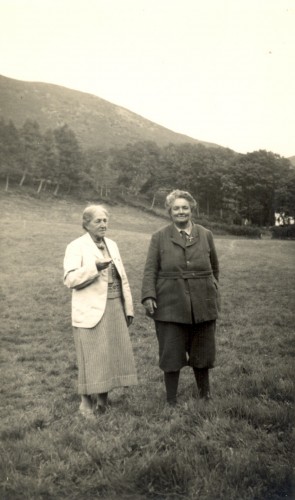
The pair travelled extensively together through Iceland and across Europe and shared their lives (and purportedly a bed) for 22 years. They would often be seen working in the garden, attending local events together, out and about with the horse and trap. The local community, and George Bernard Shaw himself, were often derogatory about Mary Lobb and her “rough” ways, comparing the pair to ‘the lesbian ladies of Llangollen’. Upon her death in 1938, May left Mary personal effects, the significant sum of £12,000 (almost £1m today!) and secured Mary’s tenure of Kelmscott Manor for the rest of her life, though Mary died only five months after May.
This rich and seemingly queer history is fascinating to me, mostly because it has often been obscured in pieces written about May or the Morris family in general. It is often seen as a quirky footnote (with Miss Lobb often referred to as May’s ‘companion’). People feel tentative, unsure and uneasy about referring to them as a couple, despite research deliberately pointing to a deep personal relationship between the two.
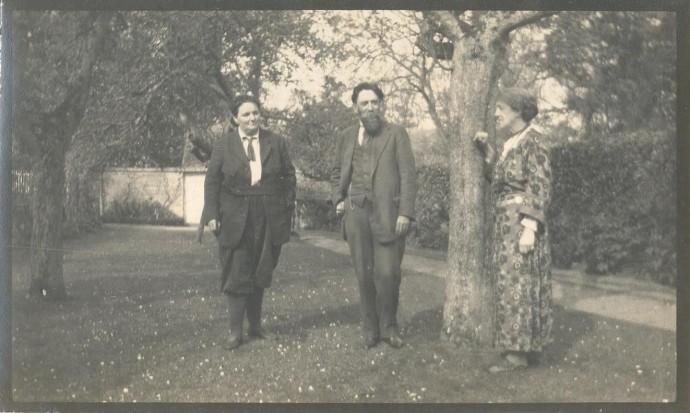
As William Morris is quoted as saying, “the true secret of happiness lies in taking a genuine interest in all details of daily life.” I wish I’d known more about May’s daily life growing up as a queer person interested in the Arts and Crafts movement. I would have added May to the arsenal of queer creatives that made me feel less alone, more part of a rich tapestry of LGBTQIA+ history.
It’s important that we reframe these histories to include people who were once just considered ‘interesting footnotes’. They help us tell better and richer histories of the world around us; histories that include everyone. As a queer person looking in, you can tangibly feel their queerness seeping out of the written accounts of their lives together. The long holidays away from prying eyes, the shared bed, the doctor’s bills paid by May on Mary’s behalf, the bequest. It makes me wonder if we often smooth over the difficult and radical in decorative art movements as we search for the palatable and simple for a wider (dare I say it?) heterosexual audience.
About the author
Laurie (she/they) is the outgoing Assistant Curator at V&A Dundee, having worked on a variety of exhibition projects. They are moving on to be the Project Curator at the National Trust for Scotland, working on digitizing the Robert Burns Museum collection for a new online collection platform.
LGBTQIA+ stories have often been left out of mainstream history and we are keen to make them more visible through stories told by our objects, LGBTQIA+ voices in the museum and by bringing in external perspectives. Explore the stories so far.
And if you want to help us tell these stories, send us a pitch!
